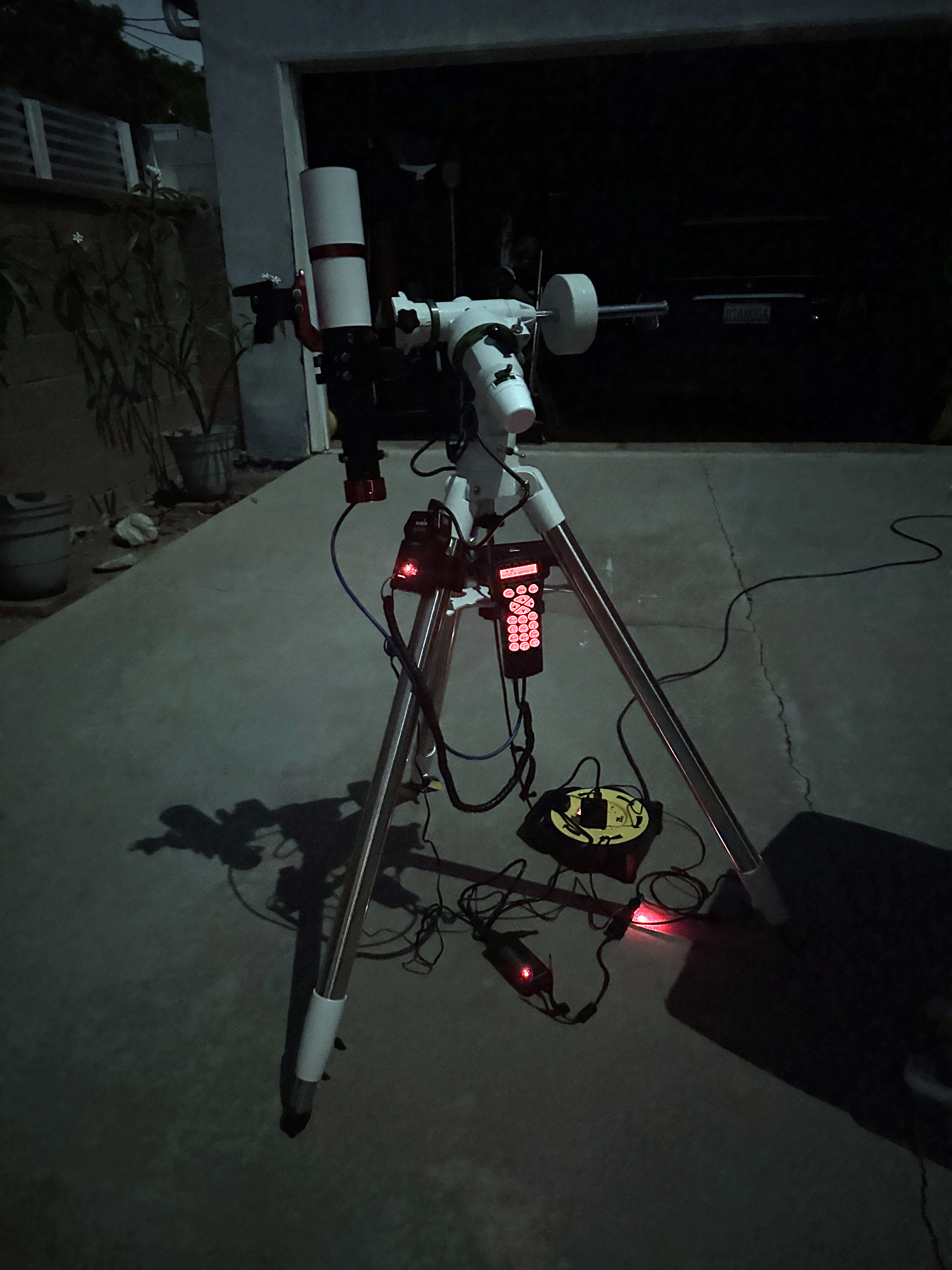I've recently acquired an EQ mount for my Z61 telescope

. Specifically, I opted for the budget-friendly EQM-35 from SkyWatcher, which slightly exceeds the weight limit recommended for my Evolution 8 OTA. However, this additional capacity offers some advantages. While the Evolution's alt-azimuth mount is more convenient for planetary observation, having both mounts at my disposal brings me great satisfaction.
This week, I had the opportunity to put the EQ mount to the test with some expansive nebulae, and I must say it was a delightful experience. I no longer needed to be concerned about altitude restrictions or field rotation. I successfully achieved 30-second exposures without any issues, and last night, I even pushed it to 1-minute exposures. Although not quite real-time Electronically Assisted Astronomy (EAA) at that point, it was fascinating to observe how rapidly the details emerged.
After capturing the Veil Nebula using the ASI533 camera, I became curious about how much of the Cygnus Loop I could capture by switching to the ASI294. I was pleasantly surprised to find that I could encompass the entire loop within my field of view by making a slight adjustment to the camera's orientation. However, reverting to the ASI294 reminded me of the simplicity of working with the ASI533. It took some time to get the ASI294 to cooperate effectively with the UHC and L-Extreme filters I was using.
Here's a comparison of the Cygnus Loop using both cameras:

With the ASI533 and a UHC filter, I could only capture the Western Veil, as depicted in the first photo. I might have been able to include a portion of the Eastern Veil with some rotation,

but as you can see in the subsequent photo, the ASI294 offers a much more aesthetically pleasing field of view for an object of this size.
Incorporating the L-Extreme filter into the setup and exploring a

1-minute exposure truly accentuates the delicate intricacies of this supernova remnant. The ability to seamlessly switch between these two cameras is undeniably a delightful advantage and I am happy to have the option between the two.
While the field of view (FOV) of the ASI294 is somewhat more extensive than that of the ASI533, the ASI533 still excels in framing slightly more compact areas,

such as this region of Cassiopeia. Here, you'll discover M52, NGC 7635 (the Bubble Nebula), and NGC 7538, all perfectly poised for a group photograph. This particular shot has ignited my enthusiasm for seeking out more clusters of celestial objects during my observing sessions. I'm discovering that this approach provides a much more engaging and satisfying experience compared to concentrating on a single object at a time. The combination of the 0.8 reducer and the Z61 telescope excels in this regard.

In this shot, I successfully captured Vega along with its companions, the Double Double (Epsilon Lyrae). These double stars are always a joy to observe through binoculars, and now, they provide a delightful view using the ASI533 camera. Interestingly, I managed to achieve this without employing flat frames or dark frames, relying on 2-second exposures.
Here's a shot of the Double Cluster in Perseus,

another stunning visual object that I can now capture in a single frame using the Z61 telescope and reducer. Regrettably, this was a brief stop on my way to the California Nebula, so I had the UHC filter in the image train, but you can still get a sense of the scene.
The EQM-35 mount has reignited my passion for Electronically Assisted Astronomy (EAA) due to its lightweight and easy portability. It eliminates the need to be concerned about altitude restrictions or field rotation, and polar alignment is a straightforward process, thanks to the polar scope and the polar alignment feature in the hand controller. Once aligned, I've discovered that the GoTo functionality is more accurate compared to my Evolution

mount. If you're considering this setup, I would recommend reaching out to SkyWatcher to acquire the Polar Illuminator designed for the Star Adventurer, which is compatible with the EQM-35 mount. The EQM-35 doesn't include a polar illuminator, and it can be exceedingly challenging to see the target icon through the scope at night without it.